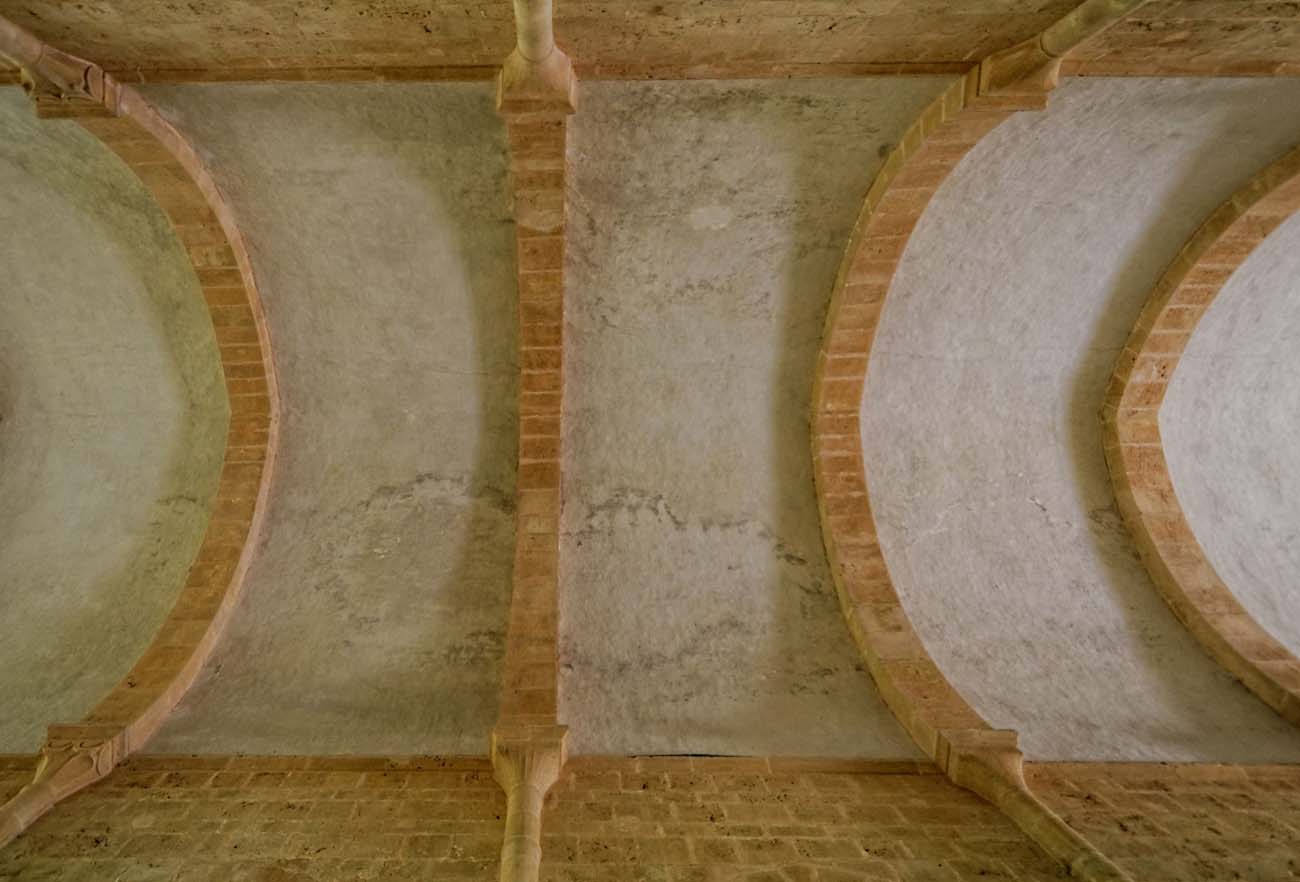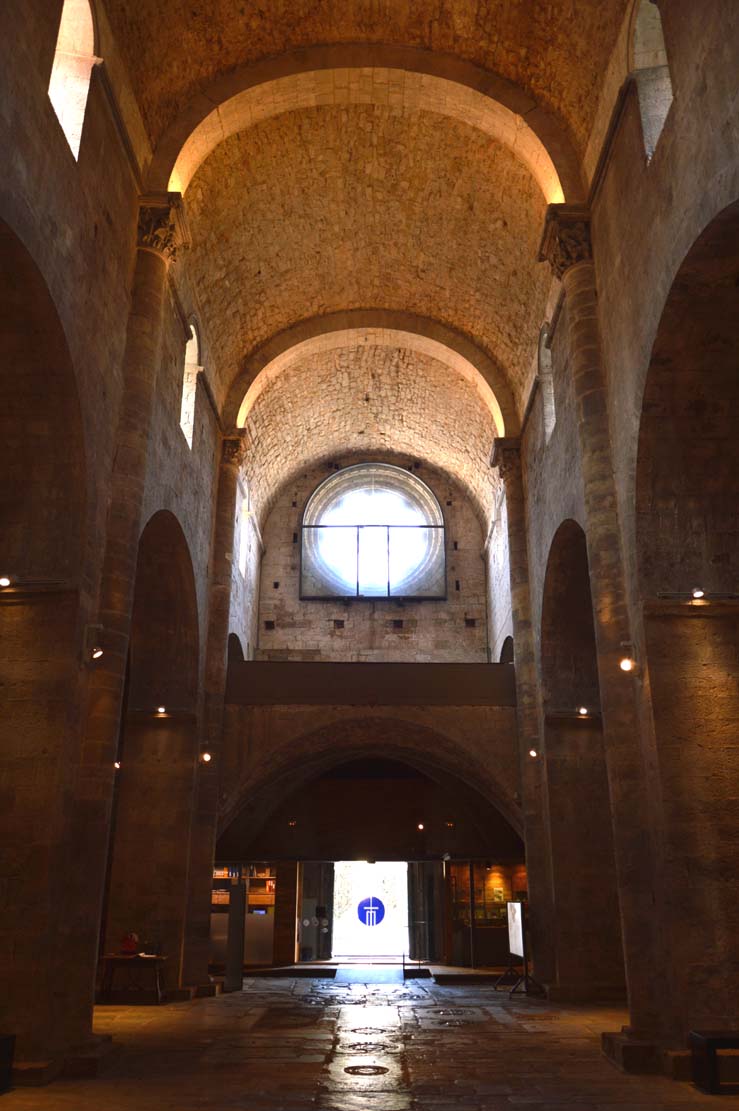Vault in the shape of a half of a lying cylinder cut along a horizontal plane. The barrel of the vault is based on longitudinal walls, set along the vault axis. Walls take up vertical and horizontal loads.
The barrel vault was known and used by early civilizations, including Ancient Egypt and Mesopotamia. However, apparently it was not a popular or common construction method. The Persians and the Romans were the first to use them more extensively. The earliest known example of a barrel vault is found under the Sumerian ziggurat in Nippur, Babylonia, dating from around 4000 BC, built of fired bricks connected by clay mortar. After the collapse of the Roman Empire for several centuries, only a few buildings were built that would require solid vaults. The return of the barrel vault was in the early romanesque period, in which thick, heavy walls provided the possibility of its maintenance. In the thirteenth and fourteenth centuries, with the advancement of the new gothic style, the barrel vaults were replaced by groin and rib vaults.




